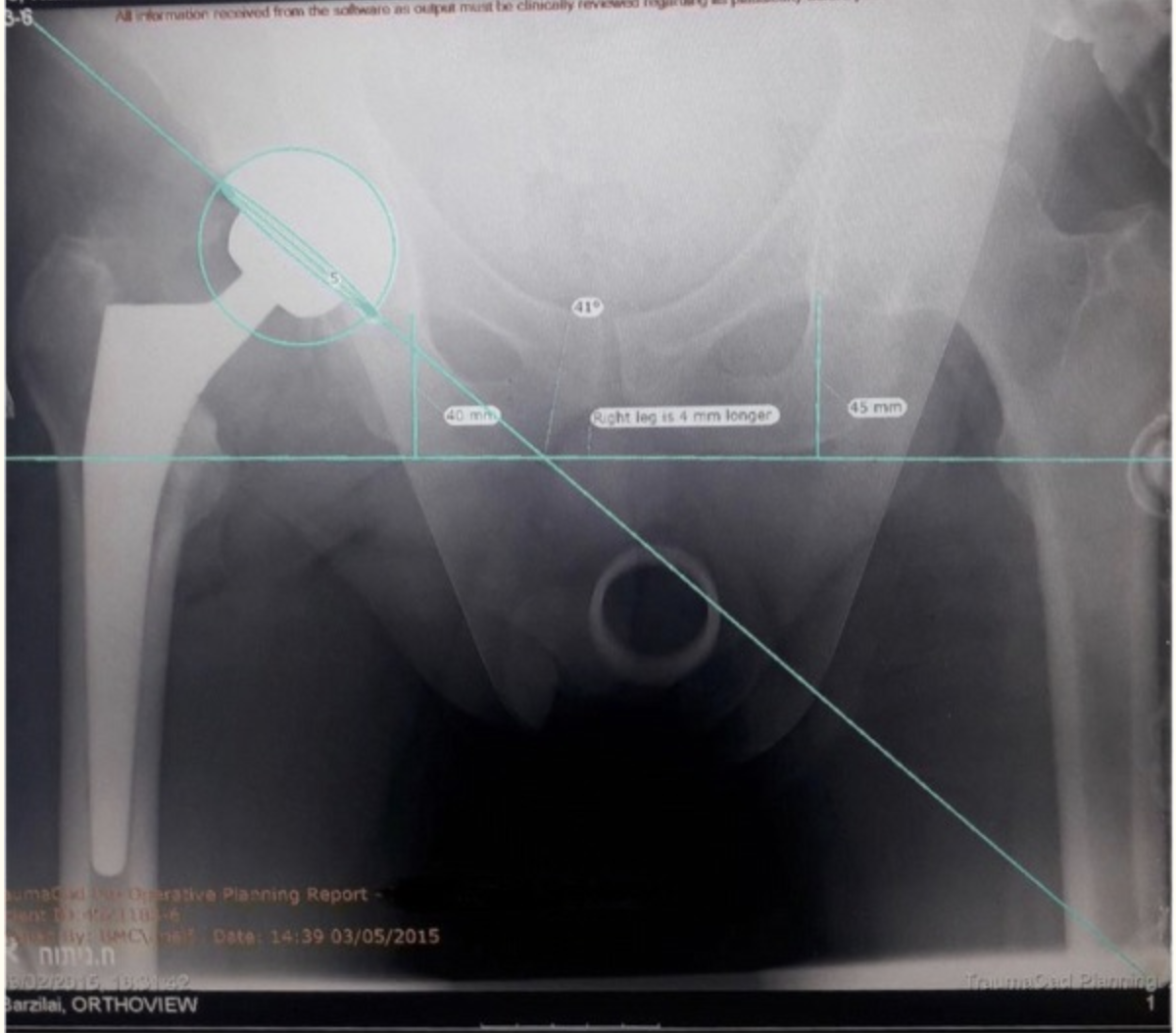Acetabular Cup Orientation and Postoperative Leg Length Discrepancy in Patients Undergoing Elective Total Hip Arthroplasty via a Direct Anterior and Anterolateral Approaches
Abstract |Background: Total hip arthroplasty (THA) is considered a successful surgical procedure. It can be performed by several surgical approaches. Although the posterior and anterolateral approaches are the most common, there has been increased interest in the direct anterior approach. The goal of the present study is to compare postoperative leg length discrepancy and acetabular cup orientation among patients who underwent total hip arthroplasty through a direct anterior (DAA) and anterolateral (ALA) approaches.
Methods: The study included 172 patients undergoing an elective THA by a single surgeon at our institution within the study period. Ninety-eight arthroplasties were performed through the ALA and 74 arthroplasties through the DAA. Preoperative planning was performed for all patients. Assessment of the two groups included the following postoperative parameters: abduction angle, cup anteversion angle and leg length discrepancy (LLD). Additional analysis was done to evaluate component positioning by comparing deviation from the Lewinnek zone of safety in both approaches.
Results: For the DAA the absolute LLD was 11 mm, ranging from -6 mm to 5 mm. For the ALA, the absolute LLD was 36 mm, ranging from -22 mm to 14 mm. None of the DAA patients had an absolute LLD greater than 6 mm. Comparatively, 7.4% of the ALA group exceeded 6 mm of LLD in addition to 2.1% with LLD greater than 10 mm. 15% of the ALA group resided out of the Lewinnek abduction zone compared to 3% of the DAA group (P = 0.016). 17% of the ALA group were out of the Lewinnek anteversion zone as opposed to 8% of the DAA group (P = 0.094).
Conclusion: Our study demonstrates good component positioning outcomes and LLD values in patients following THA through the DAA compared to the ALA.

